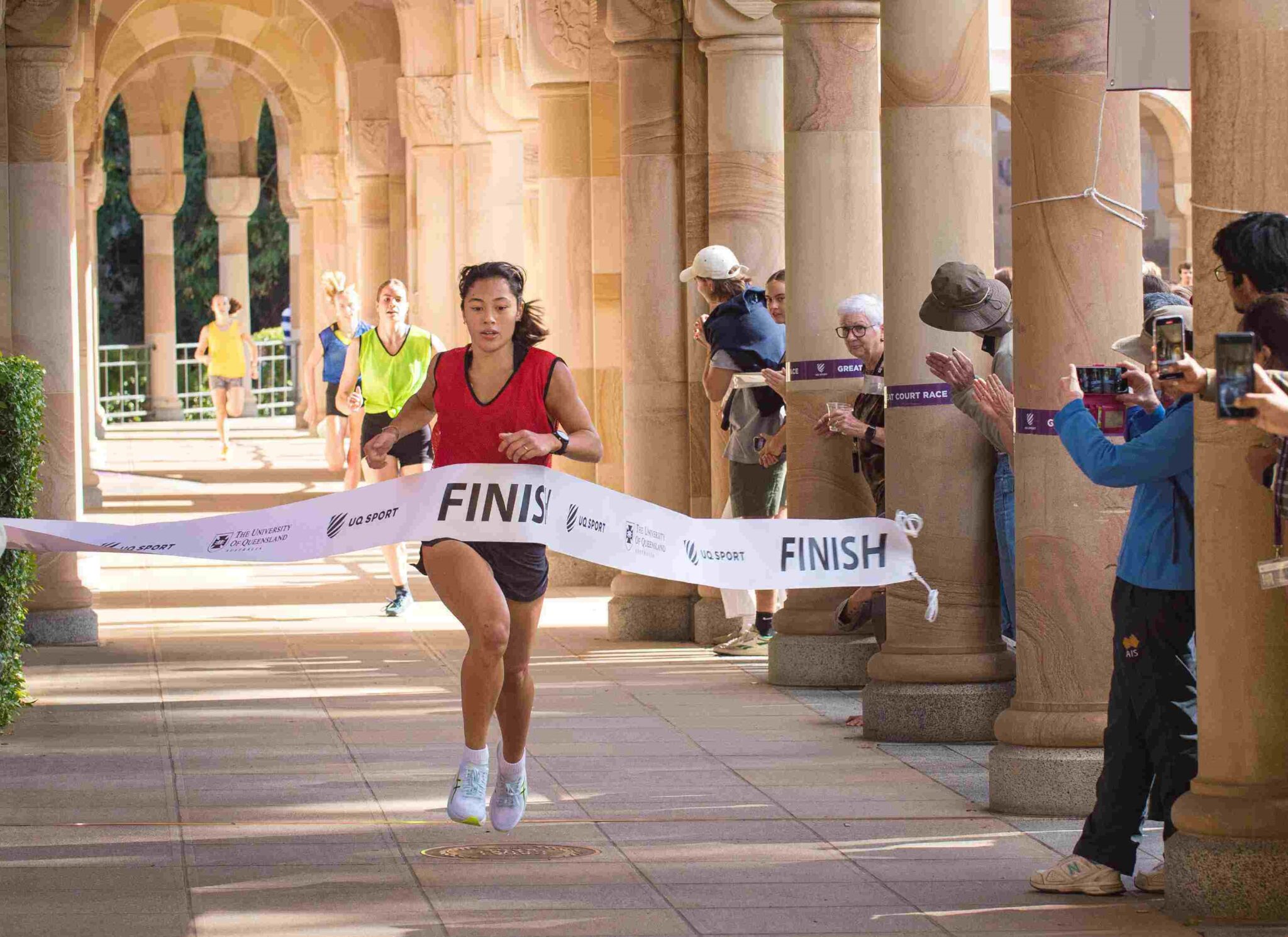Meet Dave Heyden: Leading our awesome team of swimming coaches
David Heyden is our Head Swim Coach, and if anyone is qualified to help your kids progress from doggy paddle to swim squad superstar, it’s him.
Under his direction, our awesome team of swimming coaches have got teaching the swim safety basics, stroke development and keeping kids happy in the pool, down to a tee. Your kids are certainly in safe, capable hands.
So as you can imagine, Dave’s a busy guy, but we managed to catch up with him and pick his brain on what makes a great coach that keeps kids coming back for more.
When and where did your love of swimming start, Dave?
“I’ve been swimming since I could walk, and I actually learned to swim right here in the pool at UQ Sport.
It was something my dad got into as rehabilitation after he hurt his back playing football, so he had to swim every day – which meant I had to swim every day too! Dad has been swimming for over 40 years now and he’s still coming here to UQ Sport early every morning. So Dad’s love of swimming played a big part in my own love for the sport, and it’s just become part of my life.”
You’ve been Head Swim Coach at UQ Sport for three years now, what aspects of coaching do you enjoy the most?
“The progression and development of my swimmers is the most satisfying thing I get from coaching.
You get someone who can’t do a particular stroke, and then by the end of a term they can. They might only seem like little achievements but it’s really satisfying for me and my swimmers to be consistently reaching goals, big or small.”
What do you think has been the greatest achievement you’ve been able to help one of your swimmers reach?
“There’s two great examples I can think of, and they’re both completely different.
The first one is fairly recent. I had one of my swimmers, a 10 year old girl, come back from the Queensland School State Titles where she finished second in her race. That by itself is a great achievement but what made it even better is the fact she’d improved her 50m time by 11 seconds in just one year, which is a huge improvement and a credit to the dedication she showed.
The other example is a 35 year old guy from Chile who came into our Adult Learn-to-Swim program. He could hardly swim, so he was starting from nothing. He had a couple of our instructors help him out and increase his proficiencies, and he then decided he wanted to progress into our squad swimming program.
When he first came into squad he’d be lucky to swim two 50m laps. But by the end of 12 months he was easily able to swim 40-50 laps a session. And was knocking out some good times too!
It shows what you can achieve when you’ve got the dedication and the perseverance and motivation of the coaches. He not only had physical challenges to overcome but psychological ones too, as we tend to fear a lot more when we learn something as an adult.”
Your swimming program covers everything from babies in Learn-to-Swim classes to teenagers in competitive squads. Starting with Learn-to-Swim, what do you feel are the most important things kids need to learn to be safe around the water?
“It’s got to start at a very young age. The big benefit to starting young in Learn-to-Swim is the familiarisation. You’ve probably seen videos on YouTube of babies not long out of the womb, and they feel at home in the water, so it’s about reinforcing this and not letting any fear about water build up. So the earlier you can get them in the water the better, even if it’s just when you’ve got them in the bath and you’re dripping a little water on their face. Starting earlier makes the learning easier.
The other critical aspect relates as much to the parents as it does the kids. As a parent myself you don’t want to have the fear of your child drowning hanging over your head. It’s so easy for them to escape your eyes for a minute or two, they slip away and you don’t know about it… they call it the silent death for a reason. You want to be able to manage this risk for their benefit and your own peace of mind. From an early age, teach them that if they get into trouble they can float on their back, get a breath, not panic, call out and get to the side.
That scenario is every parent’s worst nightmare, so water safety and familiarisation is the first thing we focus on in our program. We’re not trying to teach them how to swim freestyle and backstroke straight away, we just want them to be safe.”
Once kids have progressed through the levels of Learn-to-Swim, you also offer competitive squad training. As a coach, what are the key areas you focus on in developing kids at this level?
“These kids are generally wanting to take their swimming a little bit more seriously because they either really enjoy it or are quite good at it – or both. Parents also see it as a great way for their kids to stay fit, which swimming is perfect for as it’s low impact and the variety of strokes offers a healthy balance for growing bodies. So it’s good for kids to continue on in swimming even if they don’t want to go down the competitive pathway.
Our squads are based on skills as they progress from Learn-to-Swim and generally the kids are about seven or eight years old by the time they find their way into a squad environment. Once they can do all four strokes over 25m they’re able to progress into one of the squads where we can give them a more competitive environment to develop their skills.
My philosophy, which is supported by a number of people, is that you really shouldn’t be focusing on one particular stroke until the mid to late teens, with girls generally a little earlier than boys.
Focusing too much on one specific stroke can easily lead to injury because of the repetitive movements. But by keeping the program broad – and not specialising in a stroke till later – we’re able to ensure a balance of movements for the kids and keep injury rates low.”
If parents are interested in getting their kids involved in swimming, what things should they look for in a program?
“From a parent’s point of view, a coach who is motivated, enthusiastic, and wanting to have fun in a structured way is of huge benefit to the kids. At the end of the day, it’s about building that trust and team spirit so that the kids want to keep coming back for more. Only the coach can do this.
If it doesn’t have that feel and the kids aren’t motivated, it won’t take long before they get sick of swimming up and down that black line! Developing the team environment is something we’re really proactive about and you can see it at training and also when the kids go to competitions.
The kids get on well with each other, and that all comes from the top down. The coach has got to be able to build that sort of a culture for a program to be successful and the kids to be happy.”

